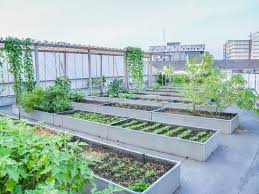Organic Balcony Farming Without Chemicals: A Complete Natural Growing Guide
Growing your own food organically on a balcony is not only possible, but incredibly rewarding. This comprehensive guide will show you how to create a thriving chemical-free garden in your urban space, producing healthy, flavorful crops while respecting the environment.
Why Choose Organic Balcony Farming?
Chemical-free gardening offers numerous benefits:
- Healthier produce free from synthetic pesticide residues
- Safer for children and pets playing near the garden
- Supports beneficial insects and urban biodiversity
- Improves soil life through natural processes
- Reduces environmental impact from chemical runoff
Planning Your Organic Balcony Farm
1. Assess Your Growing Space
- Sun exposure: Most edibles need 6+ hours of sunlight
- Wind conditions: Sheltered corners protect delicate plants
- Weight capacity: Ensure your balcony can handle containers
- Water access: Plan for convenient watering
2. Choose Suitable Organic Crops
Beginner-friendly options:
- Leafy greens (lettuce, kale, spinach)
- Herbs (basil, mint, parsley)
- Compact vegetables (cherry tomatoes, bush beans)
- Microgreens (fast-growing nutrient powerhouses)
Natural Soil Preparation
Creating the Perfect Organic Potting Mix
Base recipe:
- 40% coconut coir or peat-free compost
- 30% quality compost (plant-based or vermicompost)
- 20% perlite or vermiculite for drainage
- 10% worm castings for nutrients
Enhancements:
- Crushed eggshells (calcium source)
- Kelp meal (trace minerals)
- Biochar (soil conditioner)
Container Selection
- Material: Clay, fabric, or untreated wood preferred
- Size: Match to mature plant size
- Drainage: Essential for healthy roots
Organic Planting Techniques
Seed Starting
- Use organic, non-GMO seeds
- Plant at proper depth (check seed packets)
- Keep soil consistently moist during germination
Transplanting
- Harden off seedlings gradually
- Water thoroughly after transplanting
- Provide shade for 2-3 days if sunny
Natural Pest Management
Prevention Strategies
- Companion planting: Marigolds deter nematodes
- Proper spacing: Improves air circulation
- Crop rotation: Even in containers
Organic Remedies
- Neem oil: For soft-bodied insects
- Insecticidal soap: For aphids and mites
- Diatomaceous earth: For crawling pests
- Garlic/chili spray: General deterrent
Chemical-Free Fertilization
Organic Nutrient Sources
- Compost tea: Nutrient-rich liquid fertilizer
- Worm castings: Gentle, balanced nutrition
- Seaweed extract: Trace minerals and growth hormones
- Banana peel water: Potassium boost
Application Schedule
- Every 2-3 weeks during growing season
- Half-strength for young plants
- Stop fertilizing 3 weeks before harvest
Watering Practices
Efficient Techniques
- Morning watering reduces evaporation
- Self-watering containers maintain moisture
- Mulching with straw or leaves prevents drying
Water Conservation
- Collect rainwater when possible
- Use drip irrigation for efficiency
- Group plants by water needs
Seasonal Organic Care
Spring
- Refresh potting mix
- Start seeds indoors
- Introduce beneficial insects
Summer
- Monitor for pests daily
- Provide shade in extreme heat
- Harvest regularly
Fall
- Plant cool-weather crops
- Prepare perennials for winter
- Clean containers for storage
Winter
- Grow cold-hardy greens
- Protect plants from frost
- Plan next season’s garden
Harvesting Your Organic Produce
Best Practices
- Harvest in morning for peak flavor
- Use clean, sharp tools
- Handle produce gently
Storage Tips
- Refrigerate leafy greens in damp towels
- Store herbs upright in water
- Dry excess harvest for winter use
Troubleshooting Common Issues
Yellowing leaves:
- Check for overwatering
- Test soil pH
- Add nitrogen-rich amendment
Poor growth:
- Assess sunlight exposure
- Check root development
- Consider container size
Pest outbreaks:
- Identify pest correctly
- Remove affected leaves
- Apply appropriate organic remedy
Getting Started: Simple First Steps
- Begin with 2-3 easy crops
- Invest in quality organic soil
- Establish a watering routine
- Observe plants daily for changes
Final Thoughts
Organic balcony farming connects you with nature while providing the freshest possible food. By working with natural systems rather than against them, you’ll create a balanced mini-ecosystem on your balcony. Start small, be patient with the learning process, and soon you’ll enjoy the satisfaction of eating food you grew completely chemical-free.
